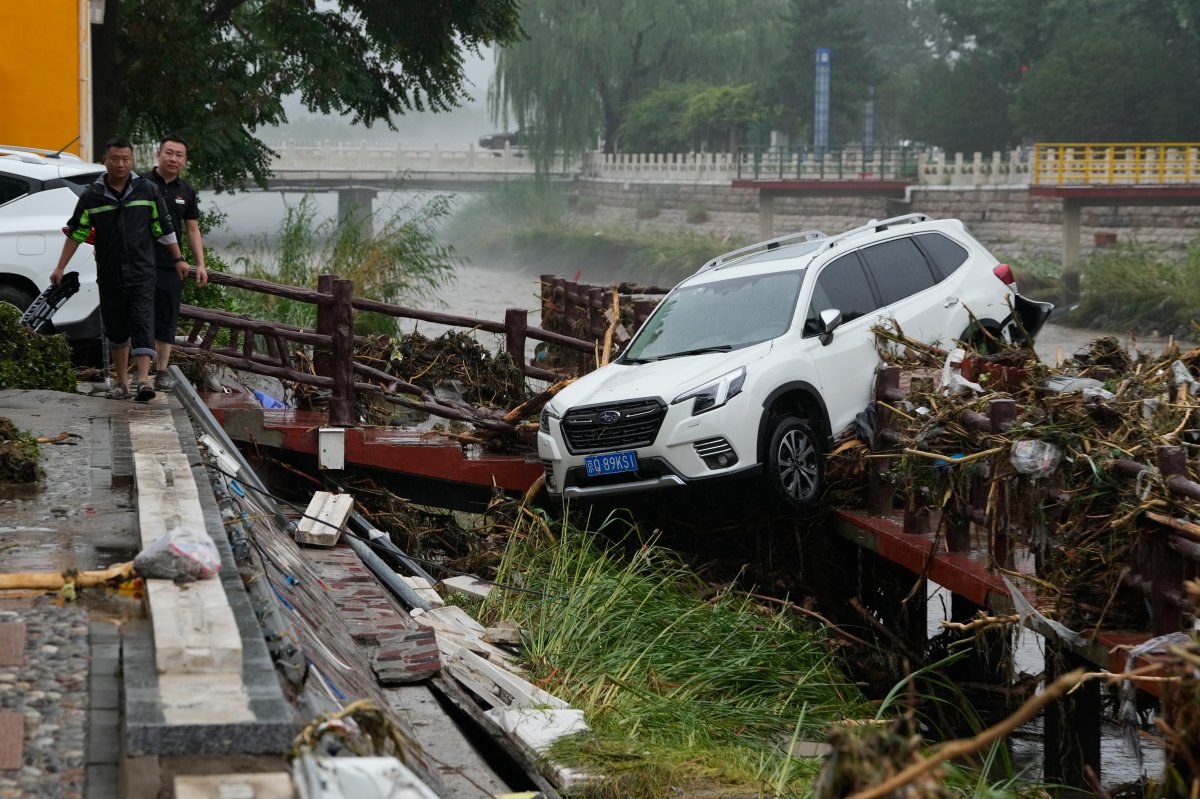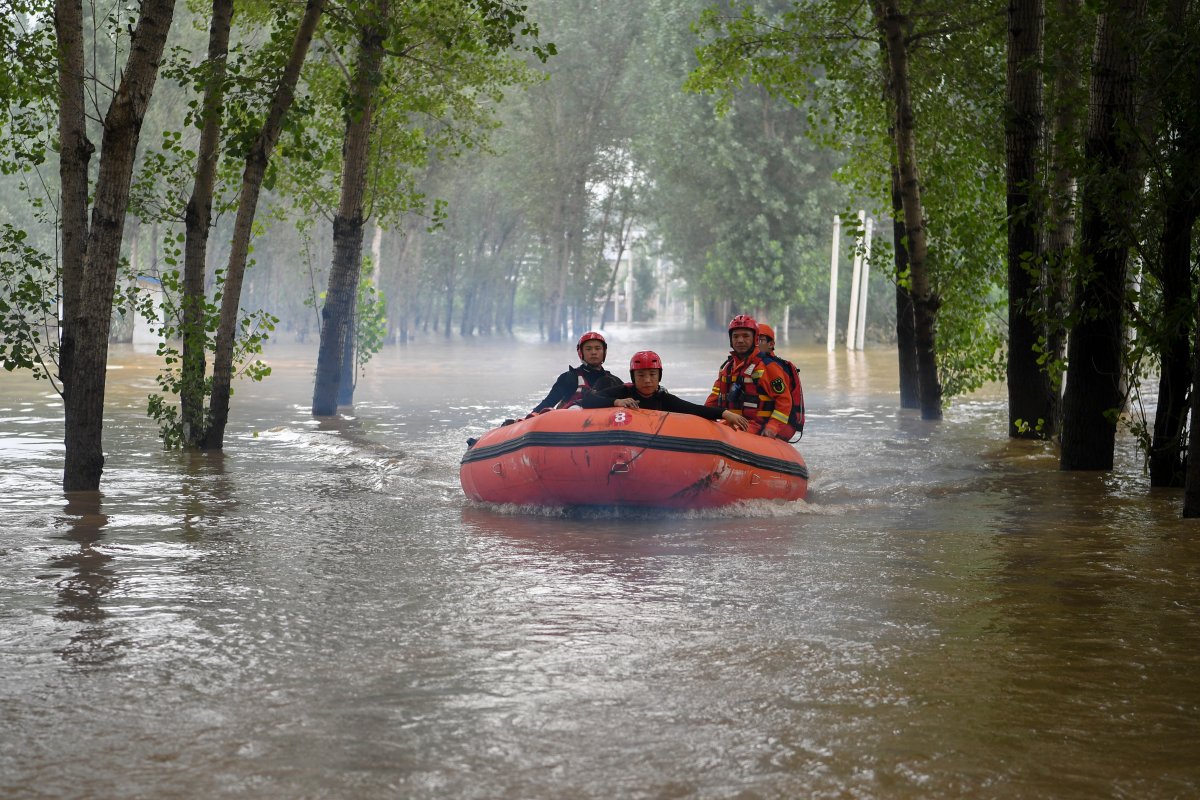At least 22 people were killed this week in northern and northeast China after record-breaking rains caused rivers to swell and roads to flood.

The most extreme rainfall to hit the Chinese capital of Beijing in 140 years left people without power and left communities in shambles in the neighbouring Hebei province before moving into the northeastern part of the country.
The rain was triggered by the arrival of typhoon Doksuri in late July, which hit Beijing and the province of Hebei for about a week, before moving into China’s biggest grain-producing province.

As Doksuri’s rain clouds headed north, a subtropical and continental high-pressure system in the atmosphere blocked their passage, leading to the continuing convergence of water vapour that acted like a dam storing water, meteorologists say.
At the same time, typhoon Khanun was gathering strength in the Western Pacific. As it approached China’s coast, moisture from the storm fed into Doksuri, effectively keeping the initial typhoon circulating and increasing the amount of rain.
The country was mostly spared by Khanun, which primarily hit Japan and knocked out power on Okinawa and other islands.
In Beijing, hundreds of roads were flooded and flights were either delayed or cancelled. School classes in the city of more than 20 million were also suspended.
The impact was more pronounced in the city’s western suburbs where raging water coursed down roads, sweeping away cars in the Mentougou and Fangshan districts. Villages in mountainous areas were also cut off, prompting helicopters to be deployed to drop off food, water and emergency supplies.
For one Beijing resident, 60-year-old Gao and his wife, the flooding that hit the capital has left him with nothing after a mudslide swamped a nearby stream, causing water to pour into his yard.
“The water went over the bridge, and then suddenly there was a mudslide that blocked the bridge, and then the water slowly seeped over,” he told reporters on Friday.
“The two of us, my wife and I, escaped with our lives. The tables and chairs were all floating around, it was a squeeze. And the water started to charge.”

Tree trunks and floating chunks of construction material sealed off his front window soon after they escaped their home.
Zhuozhou, in China’s Hebei province, was left half-submerged. The city of more than 600,000 people saw one-sixth of the population evacuated, and about 134,000 residents affected.
On Friday, the country’s grain belt was hit by the severe weather, submerging farms and worsening floods that have already swamped cities.
Northeastern Heilongjiang, known as China’s “great northern granary,” saw the flood alert raised twice on Thursday night and some areas are expected to still receive even more rain.

Nearby Shangzhi city also saw power cuts triggered by the storm, with supermarkets running low on provisions, according to local media.
Thousands of people have been displaced by the flooding, which is the worst to hit the Haihe River basin — which connects Beijing to Tianjin and the Bohai Sea — since 1963.
China’s deadliest and most destructive floods in recent history were in 1998, when 4,150 people died, most along the Yangtze River.
–With files from The Associated Press and Reuters










Comments